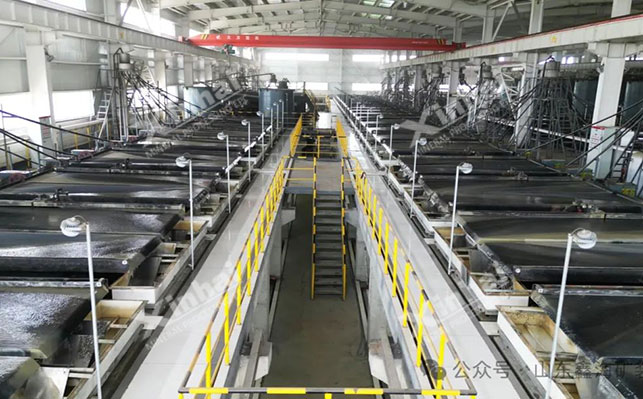
15311826613
Click to add WeChatNickel has the characteristics of high mechanical strength, good ductility, high temperature resistance and high chemical stability, so it is widely used in stainless steel, new energy and other fields, and has become an indispensable metal in the construction of a modern system. There are many types of nickel ores. According to the mineral properties, nickel ores are mainly divided into sulfide copper-nickel ores and nickel oxide ores, and the beneficiation and processing methods of the two are completely different. This article will describe the beneficiation method of sulfide copper-nickel ores.
Copper in copper-nickel ores mainly exists in the form of chalcopyrite, while nickel mainly exists in the form of free nickel sulfides such as pentlandite, pyrrhotite and pyrrhotite, and a considerable part of nickel is present in pyrrhotite in the form of "isomorphism", and there is also a small amount of nickel silicate. Sulfide copper-nickel ore types are mostly magma-melted copper-nickel ore, of which nickel content above 3% is rich ore and can be directly smelted, while nickel content below 3% requires ore dressing. Among the ore dressing methods, flotation is the main method, and gravity separation and magnetic separation are usually auxiliary.

The gravity separation method of sulfide copper-nickel ore uses the density difference of minerals to separate minerals by gravity separation.
Magnetic separation uses the magnetic difference of minerals to separate magnetic minerals from non-magnetic minerals through the action of magnetic field. In the process of magnetic separation of nickel ore, effective separation can be achieved by adjusting the magnetic field strength and the running speed of the magnetic separator according to the magnetic difference between nickel ore and impurities.

For the flotation of sulfide copper-nickel ore, there are different flotation methods, including preferential flotation, mixed flotation and mixed-preferred flotation process. Preferential flotation is suitable for ores with high copper content, and can directly obtain copper concentrate with low nickel content; while mixed flotation is suitable for ores with low copper content, and copper-nickel concentrate is separated after mixed flotation. The mixed-preferred flotation process combines the advantages of the first two, firstly flotation of copper and nickel, and then separation of copper concentrate with low nickel content and nickel concentrate with copper content, so as to improve flotation efficiency and resource recovery rate. A basic principle for determining the flotation process is that it is better to let copper enter nickel concentrate and avoid nickel entering copper concentrate as much as possible, because the nickel in copper concentrate is greatly lost during the smelting process, while the copper in nickel concentrate can be recovered more completely.

In the ore dressing process, we need to pay special attention to different types of nickel minerals and adopt different flotation reagents and process conditions for them. Pentland pyrrhotite, pyrrhotite and nickel-containing pyrrhotite can be effectively floated by high-grade xanthates such as butyl or amyl. The flotation properties of these minerals are between chalcopyrite and pyrrhotite, so better flotation effects can be obtained under different medium conditions. In addition, lime is a commonly used depressant, which has a better inhibitory effect on pyrrhotite, while excessive lime is required for the inhibition of pentland pyrrhotite and pyrrhotite. At the same time, copper sulfate is an activator for pentlandite and pyrrhotite, which helps to improve flotation efficiency.
In actual operation, its beneficiation method may need to be adjusted and optimized according to specific circumstances. Due to factors such as the nature and distribution of the ore, the flotation effect will be different. Therefore, we need to formulate corresponding process flow and beneficiation methods according to the conditions and characteristics of each individual mine to improve the nickel ore recovery rate.